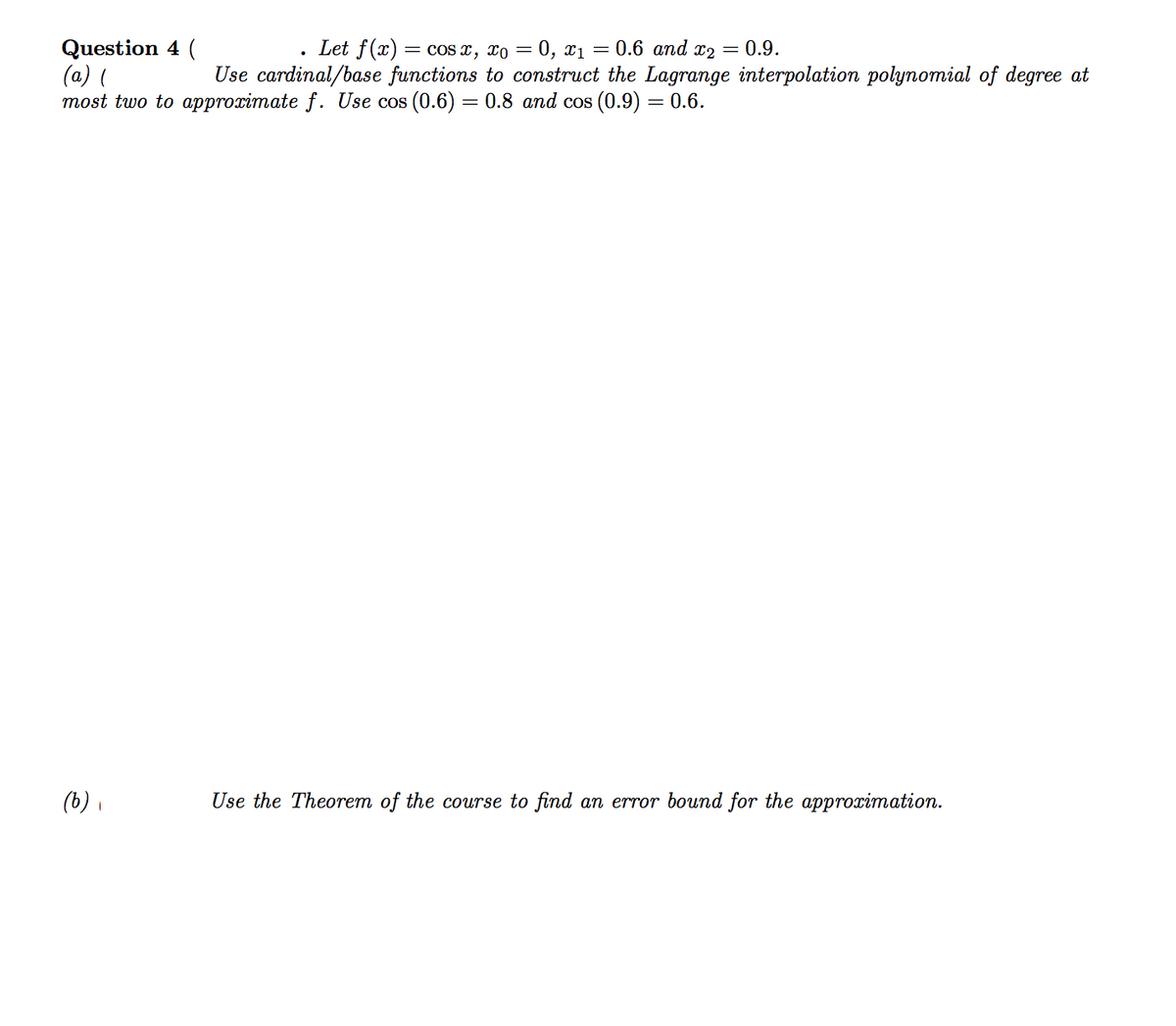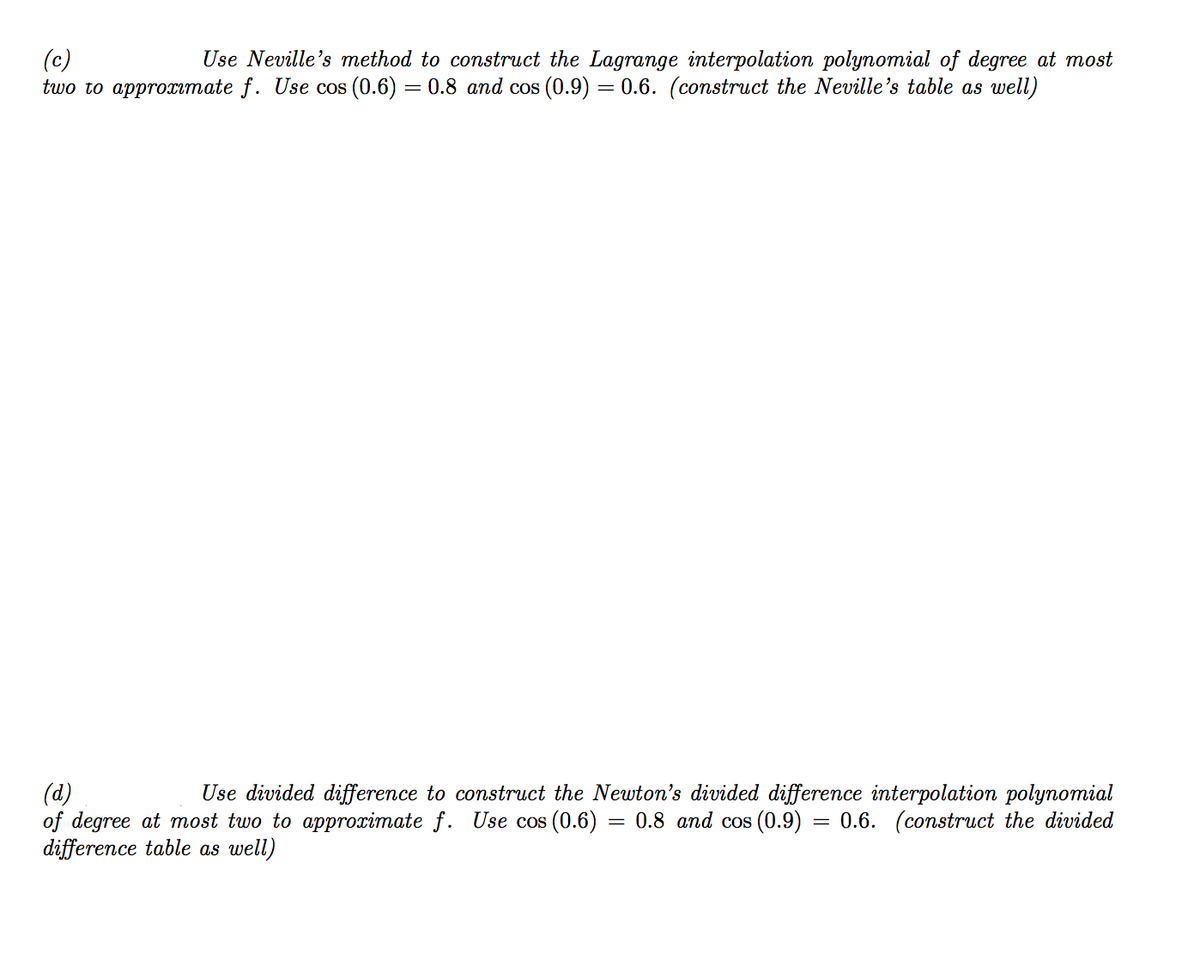(d) of degree at most two to approximate f. Use cos (0.6) = 0.8 and cos (0.9) = 0.6. (construct the divided difference table as well) Use divided difference to construct the Newton's divided difference interpolation polynomial
(d) of degree at most two to approximate f. Use cos (0.6) = 0.8 and cos (0.9) = 0.6. (construct the divided difference table as well) Use divided difference to construct the Newton's divided difference interpolation polynomial
Algebra & Trigonometry with Analytic Geometry
13th Edition
ISBN:9781133382119
Author:Swokowski
Publisher:Swokowski
Chapter7: Analytic Trigonometry
Section: Chapter Questions
Problem 2DE
Related questions
Question
Only Part D

Transcribed Image Text:Question 4 (
(a) (
most two to approximate f. Use cos (0.6) = 0.8 and cos (0.9) = 0.6.
Let f(x) = cos x, xo = 0, xı = 0.6 and x2 = 0.9.
Use cardinal/base functions to construct the Lagrange interpolation polynomial of degree at
(b) ,
Use the Theorem of the course to find an error bound for the approximation.

Transcribed Image Text:Use Neville's method to construct the Lagrange interpolation polynomial of degree at most
(c)
two to approximate f. Use cos (0.6) = 0.8 and cos (0.9) = 0.6. (construct the Neville's table as well)
(d)
of degree at most two to approximate f. Use cos (0.6)
difference table as well)
Use divided difference to construct the Newton's divided difference interpolation polynomial
= 0.8 and cos (0.9) = 0.6. (construct the divided
%3D
Expert Solution
Given a function

Note:

Step by step
Solved in 3 steps with 3 images

Knowledge Booster
Learn more about
Need a deep-dive on the concept behind this application? Look no further. Learn more about this topic, advanced-math and related others by exploring similar questions and additional content below.Recommended textbooks for you

Algebra & Trigonometry with Analytic Geometry
Algebra
ISBN:
9781133382119
Author:
Swokowski
Publisher:
Cengage

Algebra & Trigonometry with Analytic Geometry
Algebra
ISBN:
9781133382119
Author:
Swokowski
Publisher:
Cengage